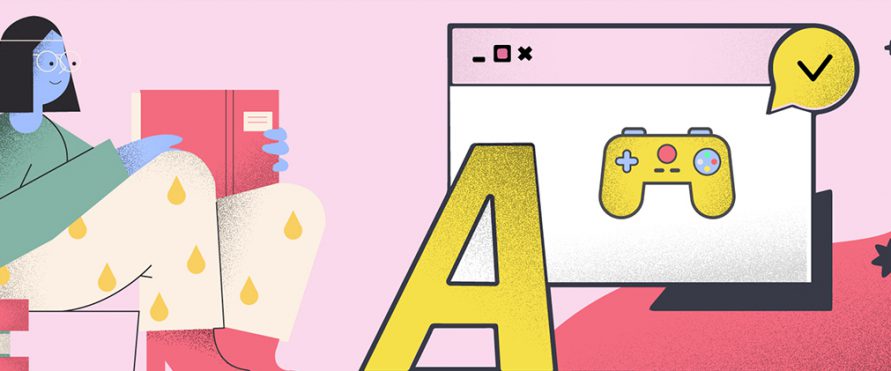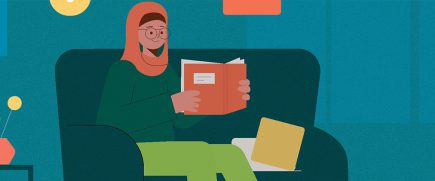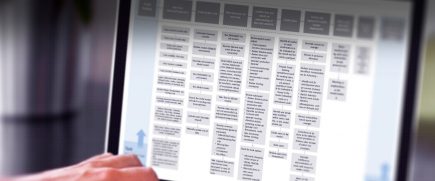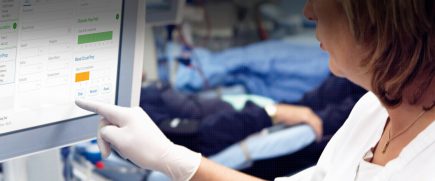Home / Industries / Education & EdTech
Education & EdTech: Accessible, Inclusive Learning via Design & Tech
Education lies at a peculiar crossroads in society. In a world of fast-paced innovation where perpetual change is the only constant, it stands encumbered with the responsibility of anticipating real-life skills by preparing us for an increasingly complex world. While also formalizing education methodologies as the practices get defined simultaneously.
The most pressing issue in the education ecosystem today is a global learning crisis. We are at the cusp of a revolution where robots could replace 800 million jobs by 2030*, while 65% of today's grade school kids will end up at jobs that haven’t been invented yet**.
*Source: Report by McKinsey Global Institute
In an environment of such uncertainty, we are left with questions of how students will use their bodies and minds to learn what will be important in the 21st century, skills such as collaboration, scientific argumentation, mathematical reasoning, computational thinking, creative expression, design thinking and civic engagement, among others. Hundreds of research projects are attempting to answer these questions* as reported by”, envisioning what the future of education and better learning outcomes might look like.
EdTechs to the rescue: The solution at your fingertips
Since education and learning is the most progressive industry, there’s nothing like going backward. The digital revolution shows sufficient promise of fulfilling the skills gap in the primary, high-secondary classes, colleges and universities and organizations. As learning expands from the confinements of schools and universities and gets spread over to the homes and workplaces, technologies like cloud computing, artificial intelligence, 3D printing, augmented reality, smart boards, virtual reality, and device technology are heralding the future with state-of-the-art techniques we are yet to see.
The global investments in edtech business grew to staggering $16.3bn in 2018 from $9 in 2017*. The opening of more and more EdTech accelerators worldwide proves that EdTech is now a field which is set to lead the way. A world of ubiquitous learning stands opened with Google offering accounts to users under 13 years of age along with unique solutions as the google classrooms, online open source courses (MOOC’s), games, flipped models of learning, the BYOD movement leading to redefine the ways we learn.
Imminent Challenges in Growth and Adoption of Educational Technologies
1. Lack of strong and quick indicators of improvements in learning outcomes
The real innovation in edtech is the impact on the education and learning of future generations, something which is hard to measure. The slow and long sales cycle of edtech and the time it takes to measure the impact on student learning outcomes, in turn, mean that investors may not see returns immediately. The founder of an Edtech company in Europe, Benjamin Vedrenne-Cloquet has stated that ‘edtech’ received less investment from venture capital than the gaming industry, yet education is 60 times the size of gaming. Hence some of LMS and digital textbooks have been realized and obtained financial backing; while others like the LMS and digital textbooks though discussed widely, but did not have much effect on the ground.
2. Inability to leverage customer intelligence to facilitate easier implementation and adoption
In order to enable effective implementation and allow beneficial digital learning experiences, training needs to happen at all levels — from teachers to administrators to principals and employees. However, education and training systems have remained static, underinvested, and are thus considered largely inadequate to the ever-changing population of learners and their needs. EdTech solutions need to be smarter to leverage user insights and feedback as a way to customize, simplify and become relevant to its users. A key segment to drive innovation, the millennial community, who are entering the workforce has also been neglected by the inadequate attention given to help them adopt and leverage the power of EdTech towards better learning.
3. Ensuring digital privacy and safety
By developing mobile educational products, millions of people are able to access a world that was previously closed to them. Educational data is a sensitive issue that should be carefully handled, but cannot be permanently “disinfected” from the dangers blended with the benefits brought by sharing digital data, accessed on-demand, using multiple devices, over multiple forms of media.
Concerns are being raised for the 617 million children and adolescents who aren’t able to read or manage basic math*. Only half of the world’s children achieve minimum proficiency in reading and math by the time they leave school, lacking the basic skills they need for the 21st-century workplace. Today, even though young people represent the world’s most valuable asset — human capital — yet are 3x more likely to be unemployed than adults.
Which makes it incumbent to constantly question over how can learning with technology expand access, equity and depth of learning across diverse people, institutions and settings. What advances in computation and technology are needed to design, develop and analyze innovative learning experiences.
As a design consultancy we probe over what makes for great learning design, and how can instructional designers ensure they remain competitive in this new era of student-centric education.
We believe that design-thinking principles in synergy with emerging technologies can help faculty tailor learning as coherent with student behaviors and preferences. Cutting across disciplines, learning experience designers can embrace graphic design, multimedia production, research-based standards and social media, bringing in a much needed integral approach to transform learning experiences.
How can better Design add value?
1. Learning made simple and engaging
Web, mobile and other applications, can be made intuitable and usable incorporating the latest trends in interface and interaction design using interactive multimedia and gaming. Since new product anxiety is very high from new tools, especially for teachers (which affects the larger set of students) the best way to ensure long-term engagement is to create a simple and intuitive start experience.- Better Onboarding.
2. Creating a global knowledge society
Design elements can help create a marketplace for learners; a global community; making learning widely accessible; allowing for greater collaboration and cross-learning and making the creation of new knowledge and sharing becomes transformation.
3. Crafting a feedback loop towards better learning outcomes
Learning outcomes can be improved using the right triggers, tools and outcomes to sustain a user’s interest which makes them gain something intrinsically valuable. With design cues; feedback, performance tracking and assessments can be made constructive and more fulfilling learning experiences which empower users to make mistakes and learn in a safe space, at their own pace.
4. Knowing your customer
User experience research methods and design thinking can help us unpack the intangibles of the student experience, building student choice into courses by giving students more control over their learning journey through the use of new forms of courseware and adaptive learning tools. Leveraging recommendations and customer experience to provide them with insights to make smarter decisions; also creating brand recognition and credibility.
Spaces where EdTech trends are transforming the domain of learning:
The following represents a series of emerging technologies that are influencing education, complemented with design practices which are being leveraged to make the most out of them.
1
Digitized Classrooms
The prevailing paradigm is of a single teacher addressing dozens of students unidirectionally in a physical setting. Even today technology is fixed and centralized, either in a computer lab or within the classroom. Rather than considering IT a standalone tool or skill, digitization can help to disperse throughout every facet of the classroom.
Some Upcoming Technology solutions
Tablets, Electronic paper screens, interactive whiteboards, data projectors, classroom performance dashboards, cascading knowledge maps, attention and eye-tracking technologies, learning management systems.
Think Design’s Recommendation
Today, Classrooms, as physical teaching models, can be replaced by studios and virtual teaching modes. As pedagogy has shifted to group learning, learning at home, a smart classroom, hands-on integrated learning, more gadgets, and devices can be included to create a more holistic learning experience. E-learning integral platforms can be a way to start. Designing the digital solution as per anthropometrics of the teachers/students as per the ease and habit patterns in the classroom can go a long way.
2
Gamification
Today it is clear that gaming is not only an entertainment activity but also an efficient alternative learning space for kids are turning to. Game-based learning enhances motivation, engagement and knowledge retention. Billed as an evolution in grading mechanisms, gamification brings instant feedback to acquired knowledge through achievements and points systems. Minecraft, a “non- educational” game, has attracted both kids and educators to explore this digital space and develop basic 21st-century skills.
Trending Solutions
Student developed apps, Educational programming tools, Educational games, Achievements & badges.
Think Design’s Recommendation
Learning through gaming can allow kids to share common interests and social spaces where they can meet to learn, play, create and feel they belong to a common and at the same time personal world. Gaming interfaces hence need to be increasingly designed to provide the much need ‘fun’ factor that engages and motivates children to use(say, leaderboards, awards etc.) ensuring interaction to allow self-paced learning, along with specific insights giving areas of improvements to track the growth of a child.
3
Dissemination of Information
Dissemination of information outside the physical silos of schools and classrooms, offering feedback and assessment to students anywhere has become one of the marvels of the digital world. Not only does it allow ubiquitous learning through the platform of mobiles, but geospatial tools for learning can be used in a local context, such as the immediate neighborhood, to allow contextual and deepened learning.
Trending Solutions
Online school communities, Video lessons, Education app stores, Open courseware, Digitization of books, Portable academic histories, Flipped classrooms, Inter-school teaching platforms.
Think Design’s Recommendation
Digitization creates an opportunity to develop peer to peer learning environments where groups coalesce to discuss, learn and solve problems with each other and shifting the role of the teacher as a facilitator. Solutions need to be designed to corroborate a feeling of seamless connection to allow students to collaborate globally; authenticity and credibility demonstrated through the user interface and product’s experience.
4
Disintermediation - AI personalized learning
Undoing the traditional teacher-student model, these technologies can offer a scenario where AI handles personalization while teachers focus on teaching.
Identifying ways to improve the learning experience while minimizing the impact on employee downtime have been challenges across the industry. Adaptive learning is about personalizing the learning experience by eliminating the need to cover things users already understand, improving the effectiveness. Traditional approaches to design involved developing courseware in a one-size-fits-all approach and then expecting the learner to consume the content.
Trending Solutions
Student-designed learning mechanics, Assessment algorithms, S2S teaching platforms, Mobile learning platforms, Task assignment algorithms, Teacher assignment algorithms, Telepresence, Algo-generated lessons.
Think Design’s Recommendation
User research could go a long way in providing custom solutions and personalizing the user experience. Also offering alternatives for training modalities is vital to success. From mobile apps and e-learning to job aids and simulations, employees need multiple touches and ways to consume information and drive behavior change. Hence capturing user preferences through multiple interfaces and leveraging usage patterns and feedback can allow for designing smarter solutions.
5
Tangible computing and Virtual Physical Studios (Ar/Vr)
The use of disembodied environments where learning, discussion and assessment could happen regardless of physicality or geography are gaining momentum as the technology matures. The new age would see the use of embedded computation to the physical via intelligent objects, the internet of things, Digitally intermediated field trips and 3D printers with a profound impact on learning mechanisms.
Also, virtual/physical studios are bridging the online–offline gap, these future technologies offering a potential future where embodiment would be secondary to information access.
Trending Solutions
Eyewear / HUDs, Retinal screens, Holography, Immersive virtual reality, Neuroinformatics.
Think Design’s Recommendation
With advent and growth of VR; AR; Cloud computing, online social networks, over time, education could become a continuous, interconnected effort, allowing students to cope with a perpetually changing world. The focus would need to shift towards intuitive product design which could simulate natural and a welcoming learning environment.
Think Design’s approach and recommendations to deliver impactful education experiences
1. Users, Actors, Entities, Ecosystem
Education is not about students/ learners alone. While students/ learners continue to be at our core, we need to be informed about the actors, entities, and ecosystem as well. As a best practice, we advocate drawing these maps out in order to comprehend dependencies. As education continues to be one of the most important contributors to our society, it is important that we understand its larger scope by looking at system level and service level influences and dependencies: Educators, Institutions, Careers, Content creators, Certifications etc.., for instance.
2. Design for mental models
Most of our personas’ motivation to use educational products and services is not to use those systems, but to work with them to get to their goals; and in education, those goals are usually long drawn. As the real- life interactions are complex and emotional and they tend to influence digital interactions as well. In this context, it becomes incumbent on us to look at what we are creating, from the minds of the users. Mental models thus are extremely critical here than anywhere else. We recommend qualitative user research to get an understanding of mental models.
3. Be careful with information overload and shift gears to learning outcomes
Imagine being a student or a formal teacher; or a tutor or any other education professional… or even a third party actor like a training centre. The very nature of education requires “focus” because it is important for learning outcomes. Unnecessary information is detrimental to the user and eventually, us. How do we handle this? Nesting? Visual hierarchy? Orientation to learning outcomes is the key to solving this puzzle.
4. Consider accessibility
Designing for even minimum accessibility requirements goes a long way in helping our users in this space. And of course, there are standards and compliances to take care of if it is needed to comply. While we schedule our design activities, consider additional time and effort to factor this in!
5. Prototype and test
Many of us shy away from testing due to the logistics involved… it’s actually not that complicated when we are clear about the methodologies and test cases. We are not talking about formalized methods of user recruitment, focus groups or closed location tests. While all these are also needed, online or one-to-one tests are highly recommended through the process of creation. Whether it is through low fidelity wireframes or visual walkthroughs or interactive prototypes, we align tools and techniques to what our context demands. What is central is the commitment to test before we commit design to our developers.
Impactful partnerships in Education and EdTech
Over the last decade, Think Design has been at the helm of redefining User Experiences in the Education and EdTech Industry. Leading Educational Institutions, EdTech and Learning Technology companies have trusted Think Design for advancing their initiatives. Drop in a word or call us; and we will be happy to demonstrate why.
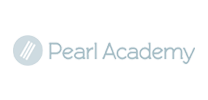

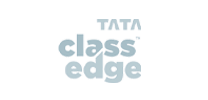

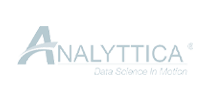

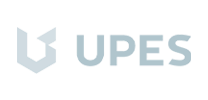
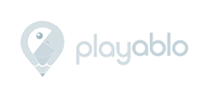
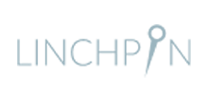
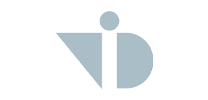
Creating Value in Every Industry
News media & Entertainment
News portals and apps, Media & Entertainment portals and apps, OTT, Mobile TV, Music, Streaming.
Know More
Enterprise & IT
ERP, Utilities, HRMS, Planning tools, Data & Analytics, LMS, Enterprise systems, Productivity suites.
Know More
Healthcare & Lifesciences
Medical devices, Hospital management systems, Pharma, Wearable tech, Personal healthcare, Fitness, Wellness.
Know More
Networks & Smart devices
Telecom, Home automation, Data networks, M2M, IoT, Utilities, Law enforcement, Defense & Border security.
Know More
Education & Edtech
Institutions, Portals, Apps, Learning management, Gamified learning, MOOCs, Universities, Learning centers.
Know More
Banking & Financial Services
Fintechs, Banks, Insurance, Payments, Wallets, Lending, Trading, Investment, Blockchain, Currencies, Wealth management.
Know More
End-to-End Design Expertise
